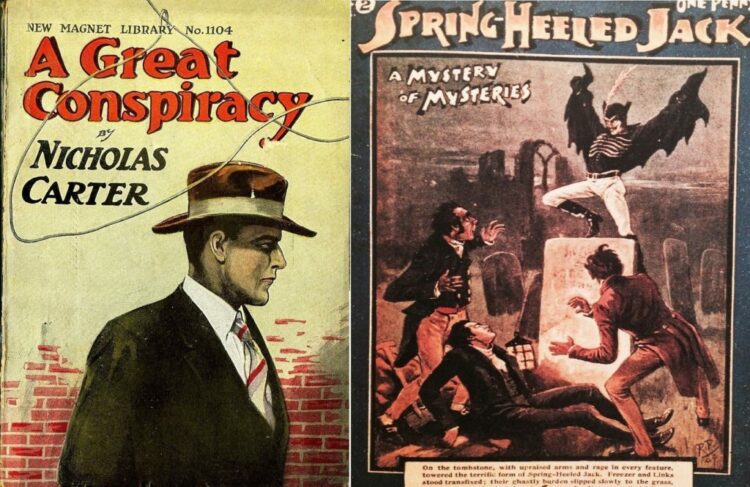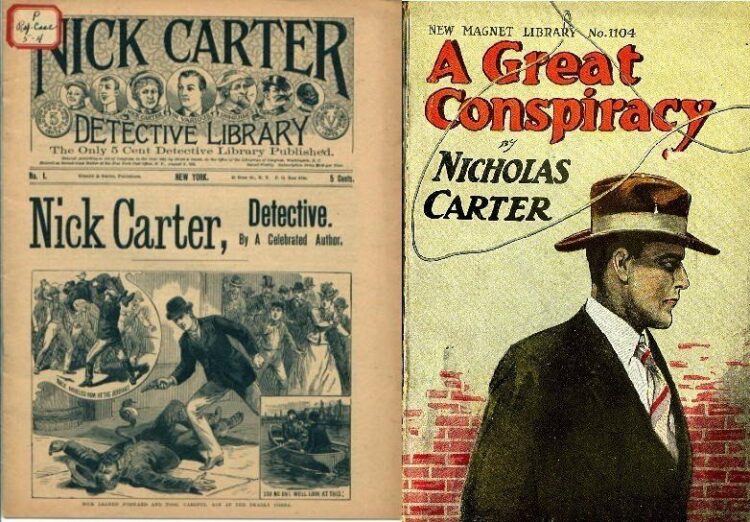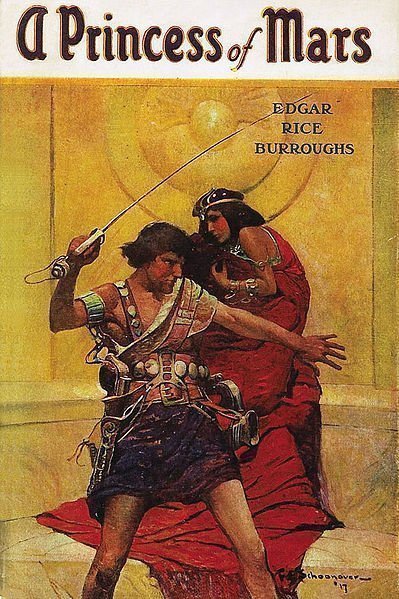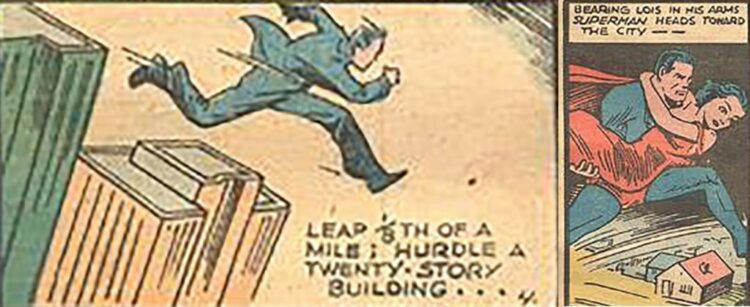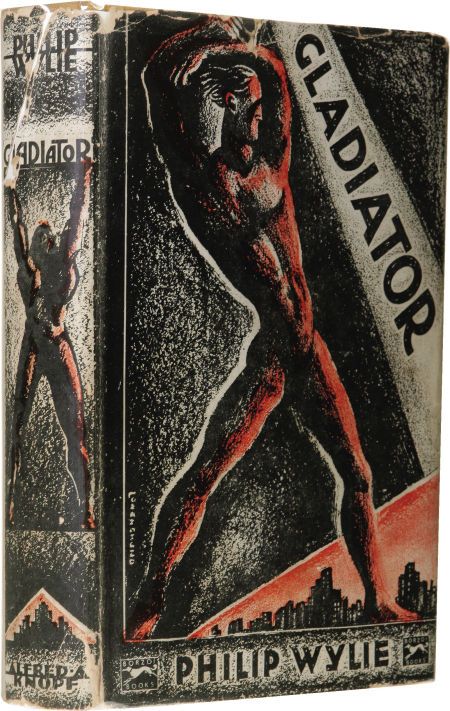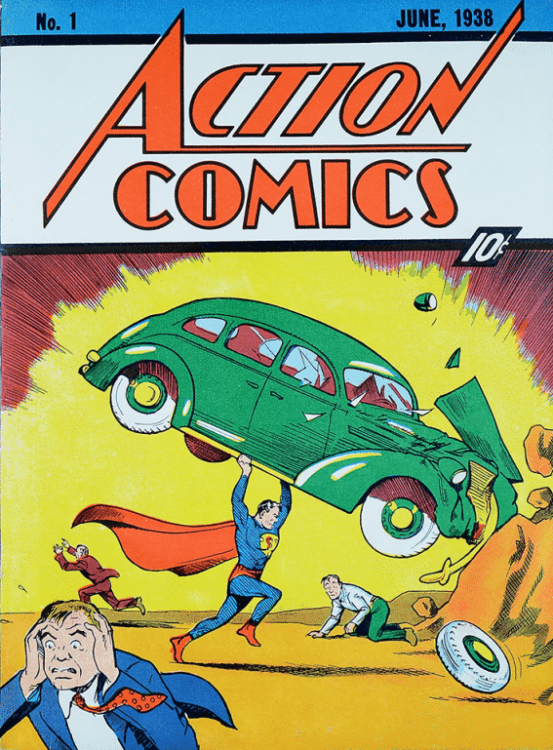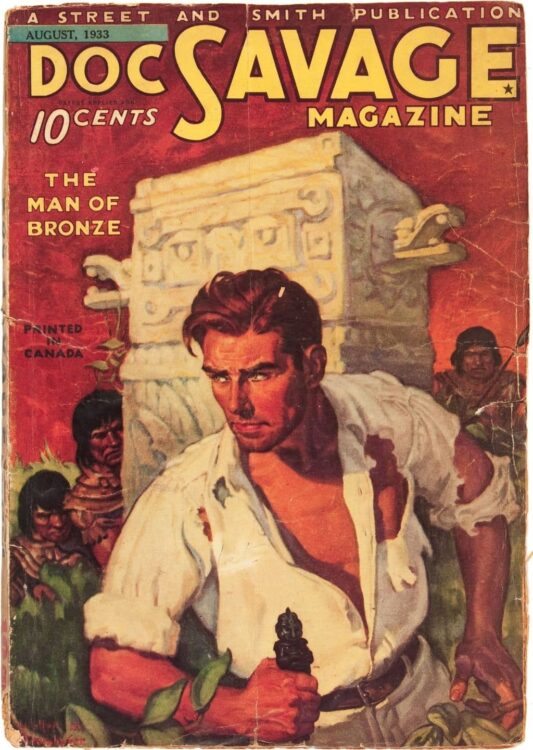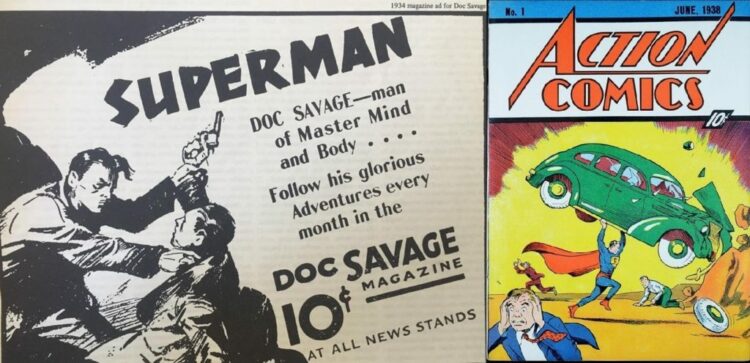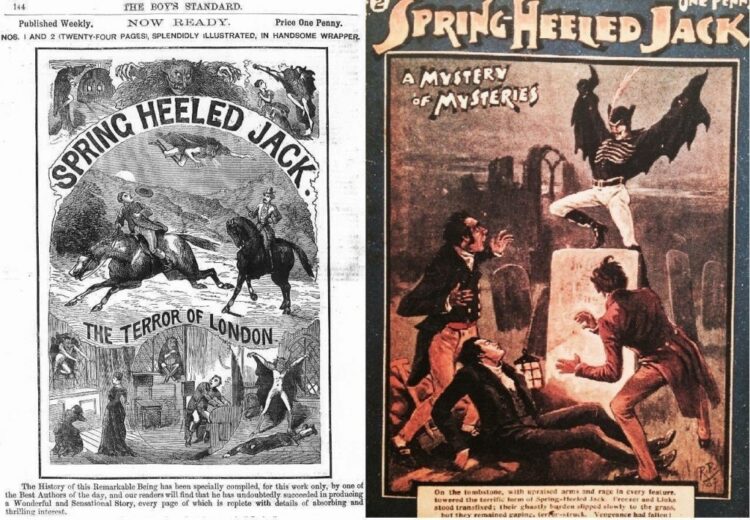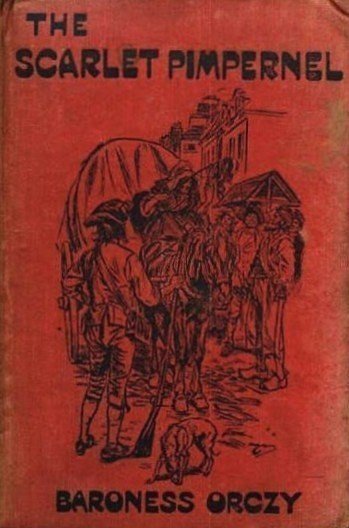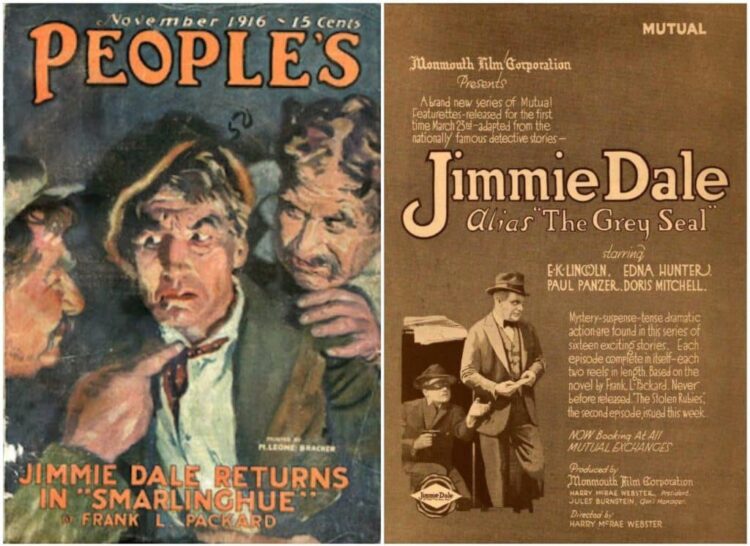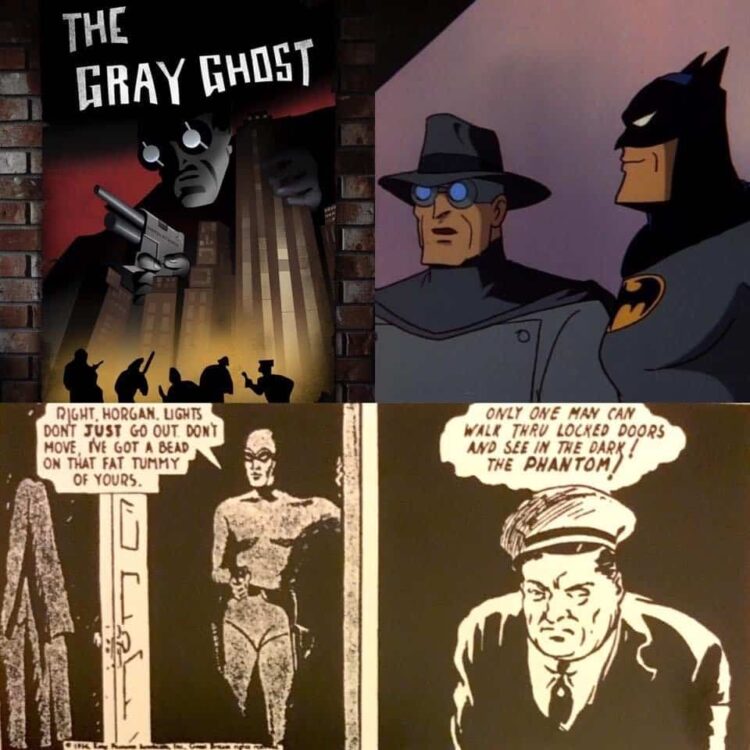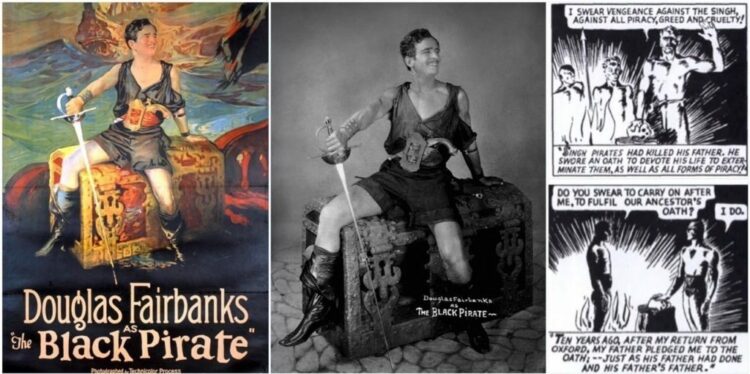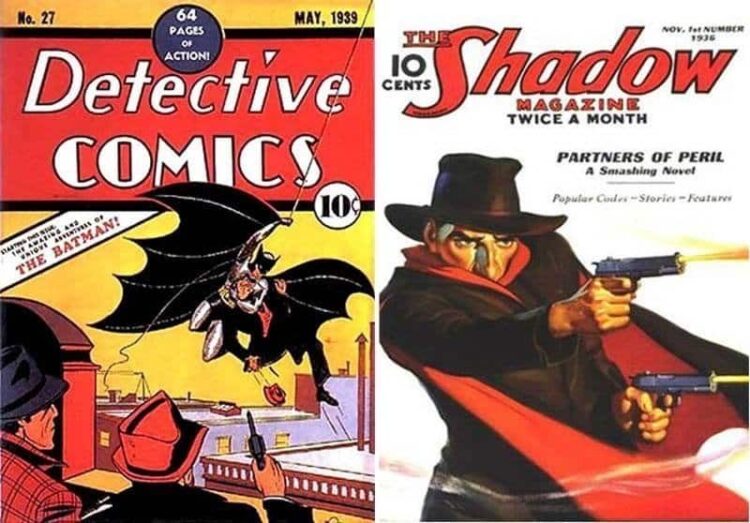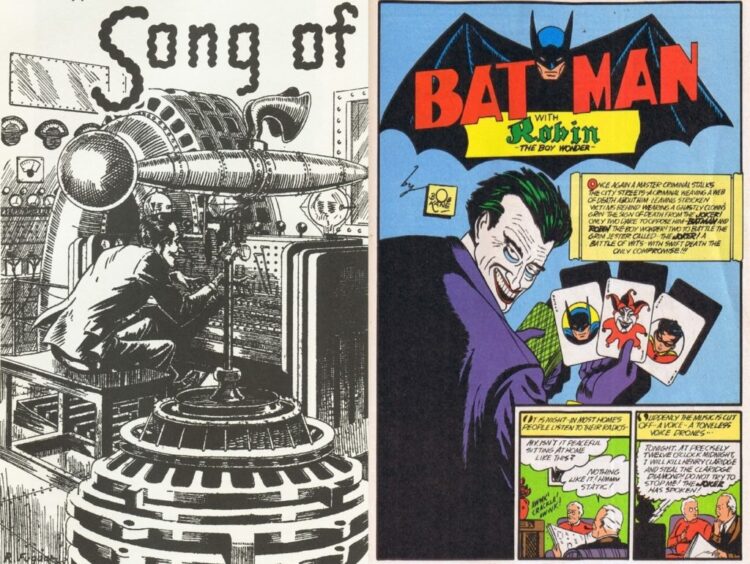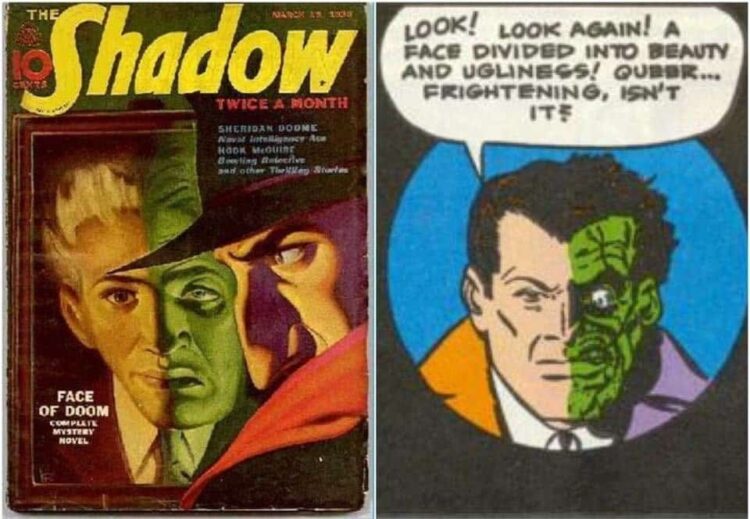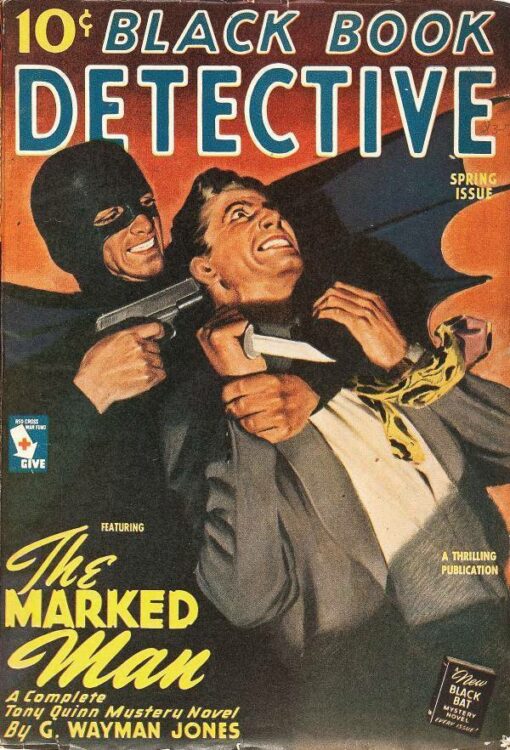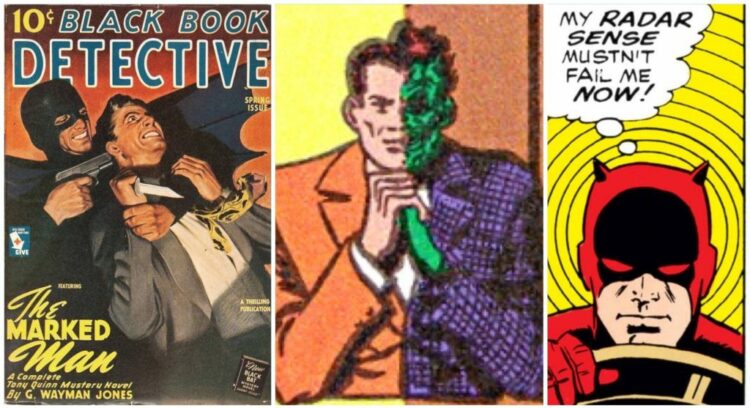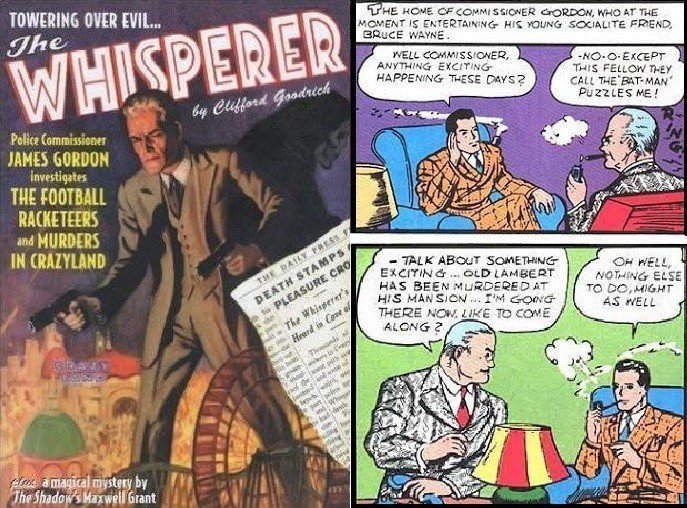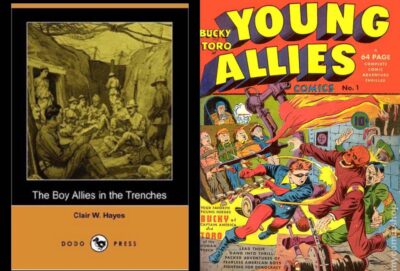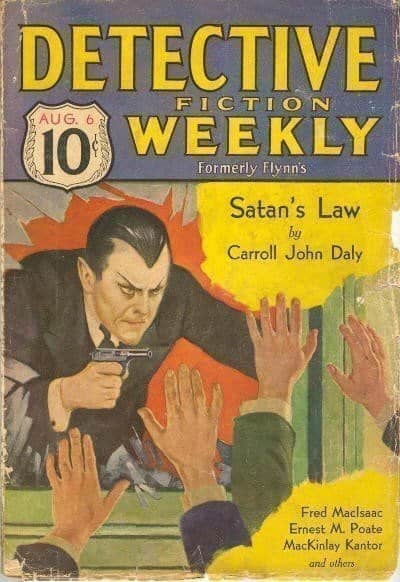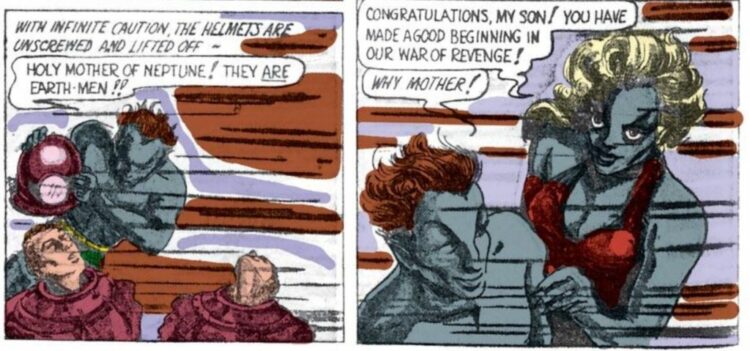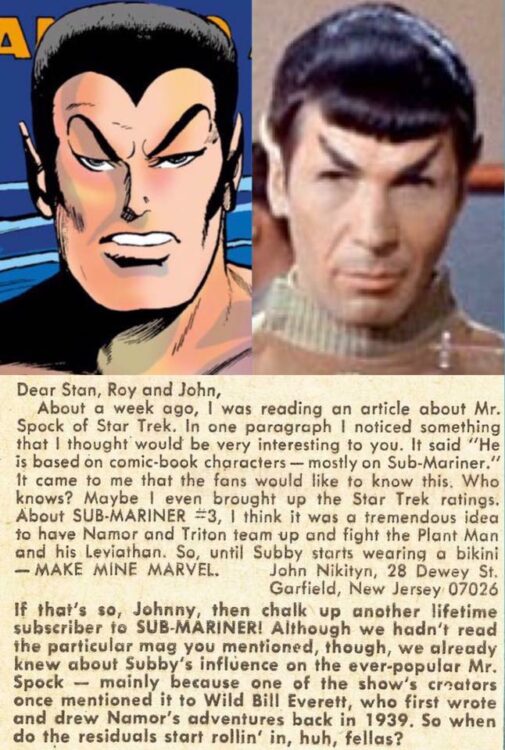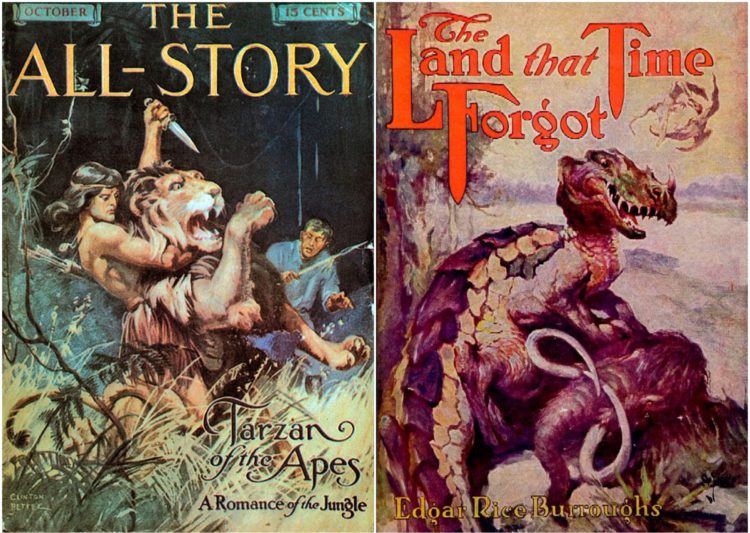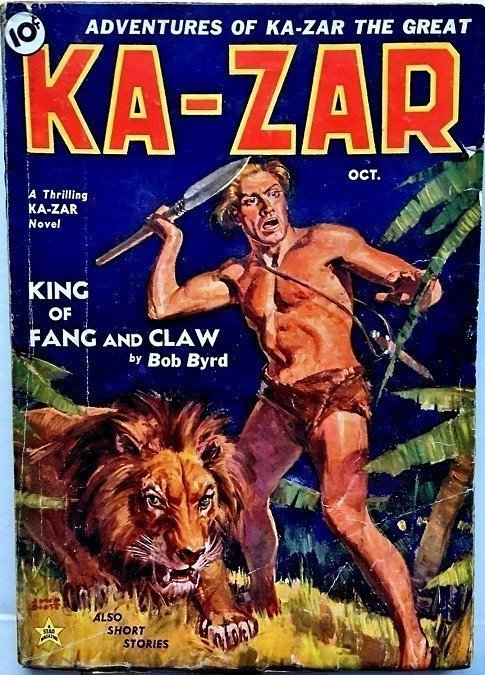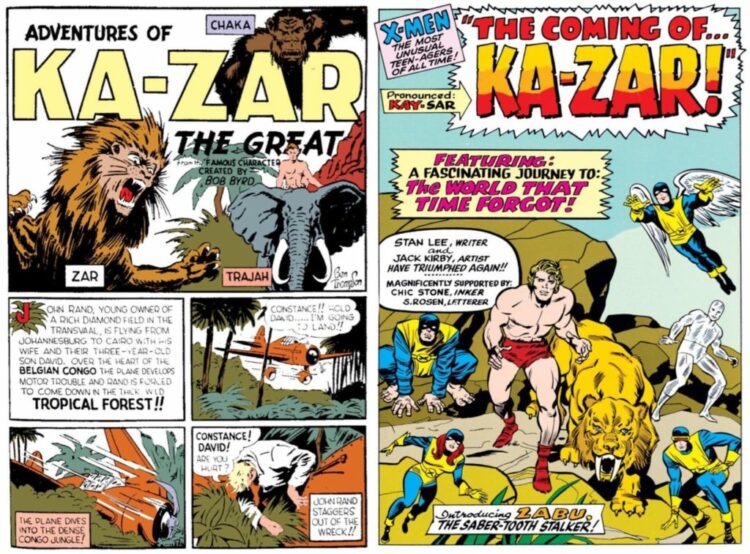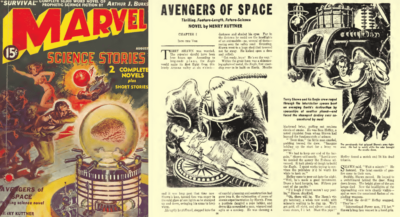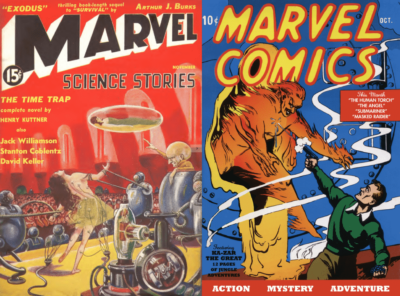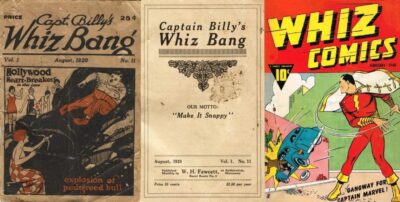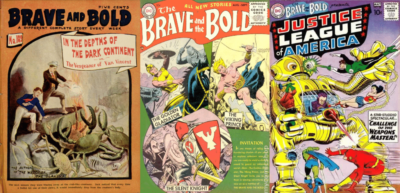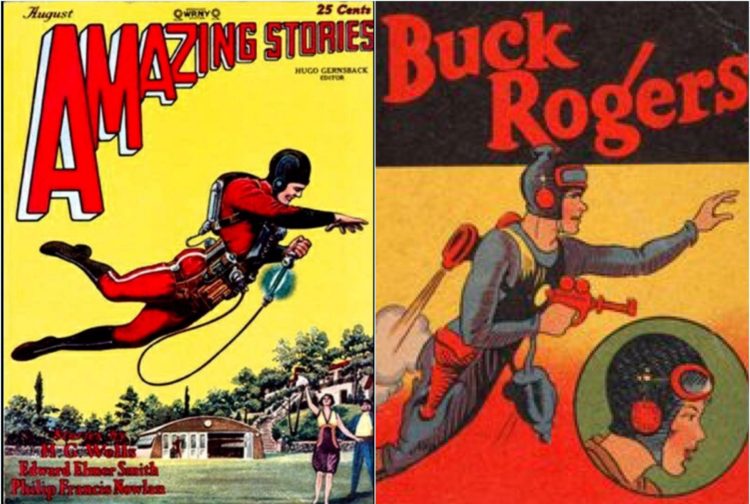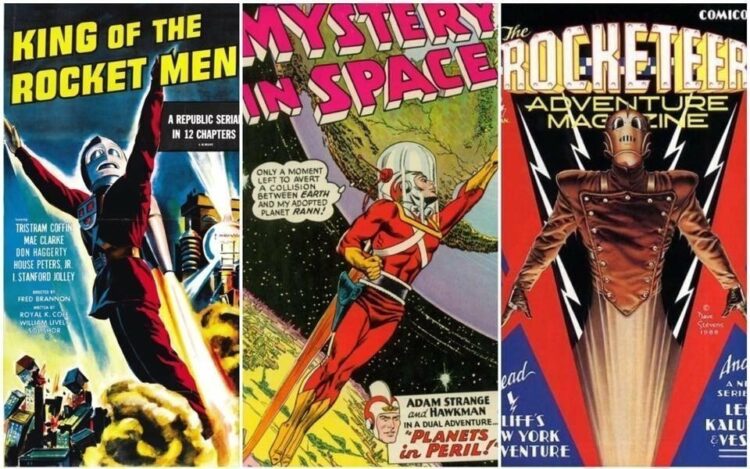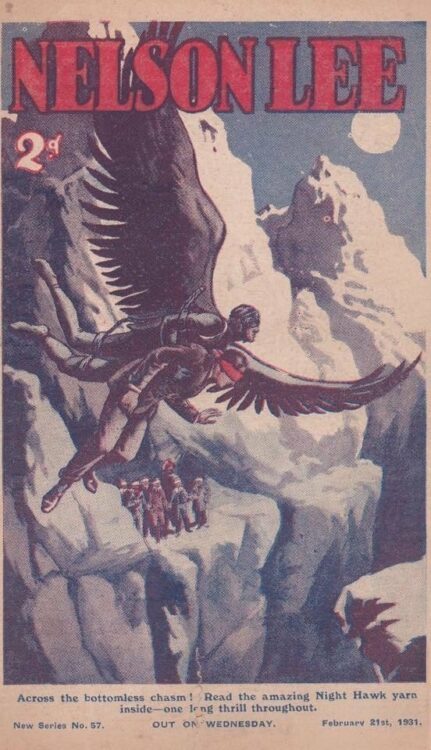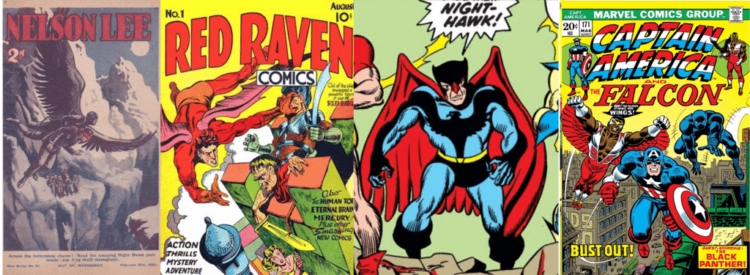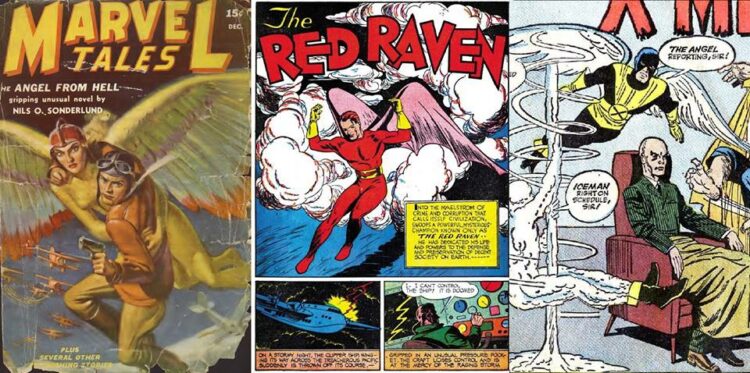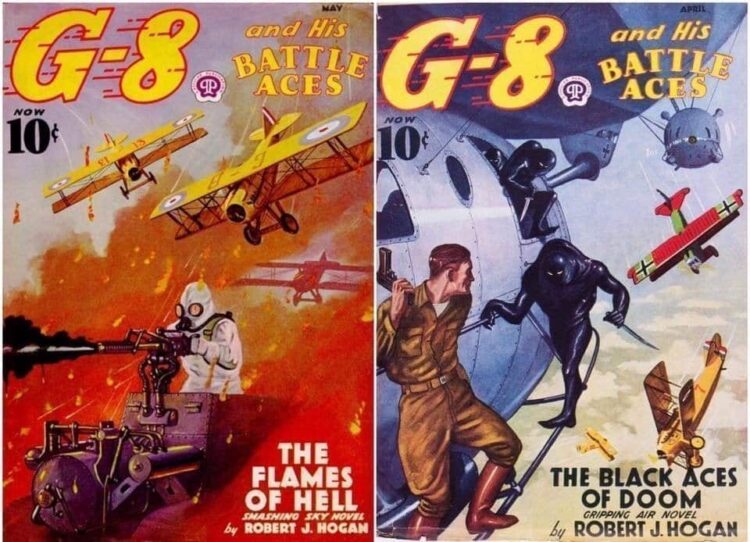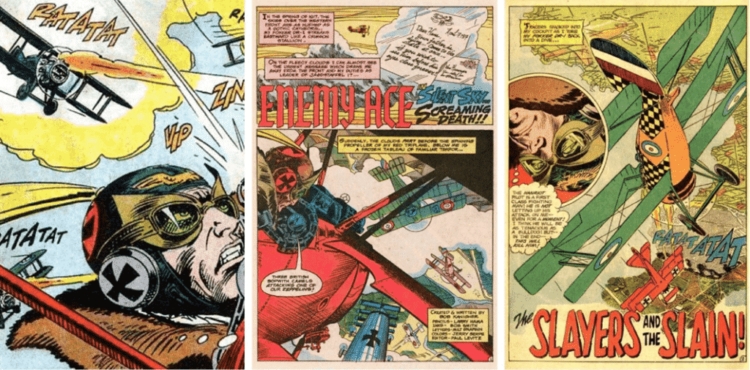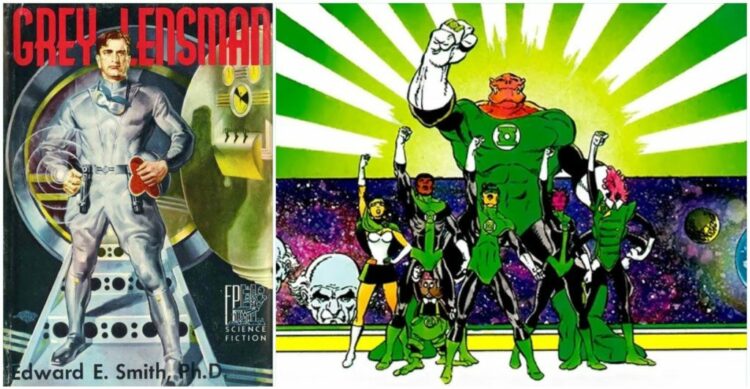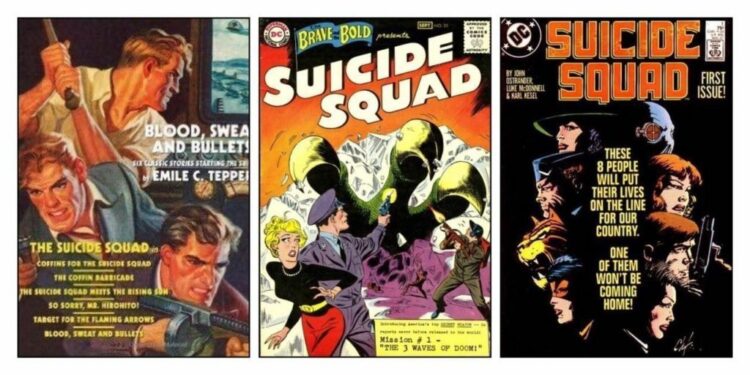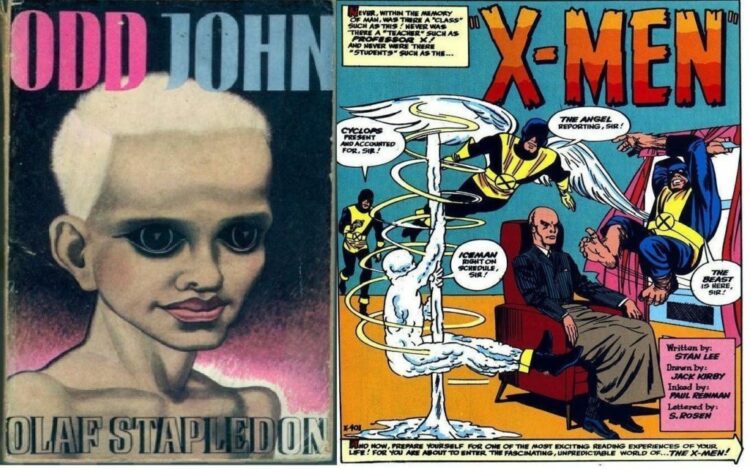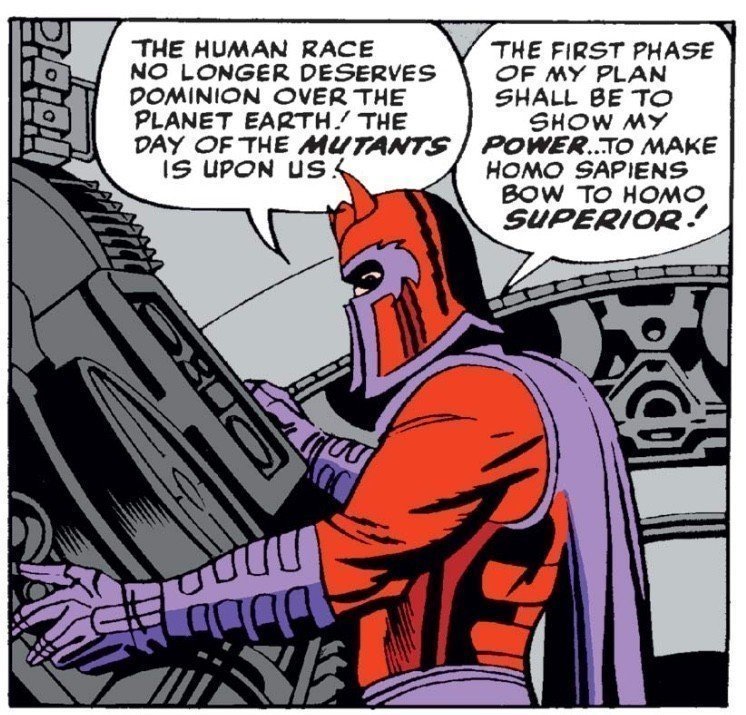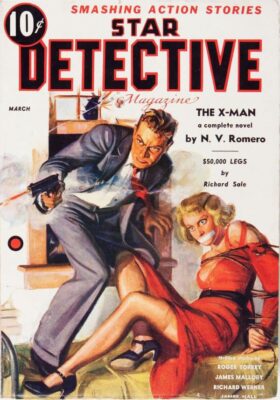The Influence of Pulp Fiction on the Golden and Silver Age of Comic Books by Alex Grand
Read Alex Grand’s Understanding Superhero Comic Books published by McFarland Books in 2023 with Foreword by Jim Steranko with editorial reviews by comic book professionals, Jim Shooter, Tom Palmer, Tom DeFalco, Danny Fingeroth, Alex Segura, Carl Potts, Guy Dorian Sr. and more.
In the meantime enjoy the show:
Please read article and/or Click to watch video:
Welcome to CBH, today we’re talking about interesting Pulp Precursors to Comic Books. Superhero’s are a lot of fun, and get a lot of screen time in movie theatres these days. Some fans will check out these old comic books and have a great time watching these characters being created by people like Jerry Siegel, Joe Shuster, John Broome, Gil Kane, Gardner Fox, Joe Simon, Jack Kirby, , Bill Finger, Bob Kane Mort Weisinger, Jerry Robinson, Wally Wood, Robert Kanigher, Joe Kubert, Carmine Infantino and Stan Lee.
As incredible as these people were, they read their own entertainment when they were younger, and a lot of that was found in early pulp magazines, and newspaper comic strips. This episode focuses as an introduction to some pulp magazine precursors to some of the golden and silver age comic book characters we know today. Literary ancestors or antecedents can go back thousands of years, but for the sake of this video we are going start at 1886, with a penny dreadful of an older british bogeyman legend of Spring Heeled Jack (who would link into Batman) and Nick Carter, a Super-Detective (who would link into Superman).
1886. Nick Carter, Master Detective was a dime novel by Ormond Smith and John Russell Coryell that premiered a private detective who had super strength, super knowledge, excellent at every hobby, he was described as having bronzed skin, and he was a little giant at 5’4”.
1912 John Carter of Mars premiered in a pulp magazine serial by Edgar Rice Burroughs.
In this story, gravity was less on Mars which allowed John Carter who was a human from Earth, to jump great leaps in these old stories. In Action Comics 1, 1938, Superman had the physique of an alien from his home planet who could jump 1/8th a mile with the lighter earth gravity, hence he could “leap tall buildings in a single bound.”
One 1930 Science Fiction novel that deserves mention in the lineage of Superman is Philip Wylie’s Gladiator, about a scientist that injects his pregnant wife with an ant formula that gives their soon to be born son, the proportional strength and resilience of an ant.
Not only would the later Ant-Men and Spider-Man gain insect strength in the 1960s, but this superhuman baby would be raised to be supremely humble by his Midwest parents, and would even lift a car as shown on the cover of Action Comics 1.
Many of these traits would be used and implemented in a 1933 character, Doc Savage.
His name is Clark Savage Jr and he premiered in “The Man of Bronze” 1933.
Doc Savage was called a “Superman” in a 1934 pulp magazine ad. He could sidestep bullets and lived in his “fortress of solitude” in the Arctic. Many of these traits would go on to be implemented into Superman the Man of Steel, either at conception or as the character developed.
Mr. Mxyzptlk premiered in Superman 30, 1944, created by Siegel and Shuster and seems to have a pulp precursor in “Sky Imp” from Fantastic Adventures Magazine, 1943. Does this mean that Siegel and Shuster read Nick Carte or this Pulp? Maybe, Not necessarily, but it does show that one story inspires another and suddenly you have themes all over pulp culture of the time, and then synthesized into the Superman comics.
Lester Dent wrote most of the Doc Savage pulp stories notably “The Red Skull” which was an early story in 1933. Joe Simon and Jack Kirby (notorious pulp fans) depicted a villain called “The Red Skull” in 3 appearances, 1941. The character creation was credited to their friend, Ed Herron.
Jerry Siegel and Joe Shuster also mention in an interview, that they watched Douglas Fairbanks in the Black Pirate to get the heroic facial/body expressions for Superman.
1886, A Penny Dreadful of Spring Heeled Jack was put together and summarized all the rumors of this british legend into an entertaining story of a rich young man, whose parents were killed, he then stalks the streets to use trickery as a vigilante against criminals, and engage in a wee bit of mischief. Yes, these traits sound like Batman
1914, Jimmie Dale, The Grey Seal by Frank L. Packard about a wealthy playboy who puts on a costume, sneaks on rooftops, leaves a gray paper seal behind to mark his conquest, and eventually wages war on criminal organizations.
The pulps & news strips contributed to comic books in the 1930s. One hybrid strip was the 1936 Phantom by Lee Falk which was originally to be named “The Gray Ghost.” The name, Phantom was used in pulps as far back as 1914 “The Grey Seal” who fought a villain Phantom.
The Gray Ghost was Batman’s child hero in the 1990s animated series.
A small tangent on the Phantom, Lee Falk has mentioned that his 1936 Phantom had some of his origin inspired by the 1926 Douglas Fairbanks film, The Black Pirate where a son’s father is killed before his eyes by pirates and the young nobleman survives and swears an oath of vengeance on them. Both characters wear rings that are unique to the hero’s identity. Yes, Batman gets a similar origin story.
1930, The Shadow was created by Walter B. Gibson for Street & Smith, a man who uses trickery to give a sense of mysticism to criminals, he uses disguises to infiltrate criminal organizations, and disguises himself as a wealthy billionaire playboy Lamont Cranston.
The first Batman Comic written by Bob Kane with Bill Finger was a rewrite from the 1936 Pulp Shadow story, “Partners in Peril.” He also wrote a story “Lingo” with Shadow modified boomerang in a batarang fashion.
1951, Bill Finger writes The Man Behind the Red Hood, the definitive origin story of the Joker being a small time criminal, Red Hood who escapes Batman by falling into a vat of chemicals at the Ace Playing Card Company. This accident results in him looking like a disfigured clown. However, Theodore Tinsley wrote a Shadow story called the Grilm Joker in 1936 about a clown mob boss. Coincidentally Theodore Tinsley also wrote about the Scarlet Ace in a Crime Pulp in the early 1930s which also has some similarity to the later Red Hood. As much as Conrad Veidt was an inspiration on Bill Finger and Jerry Robinson, so also does it appear was Theodore Tinsley, the pulp writer.
More as far as Pulps to Comic Books, we have Dr. Death who first appeared in All Detective Pulp Magazine, 1934 was a name that Bill Finger and Bob Kane would use in Detective Comics 29, 1939.
1940 Detective Comics 35 shows that Batman was more like The Shadow than his post Whitney Ellsworth self as he would not shy away from using a pistol to deliver justice.
Amazing Stories 1938 has a Joker type villain in Song of Death by “R. Fuguat” which is a precursor to the creation of the Comic Book Joker by Blil Finger, Jerry Robinson and Bob Kane in Batman 1, 1940.
The 1938 The Shadow in Face of Doom appears to be a direct inspiration to the appearance of Two Face in Detective Comics 66, 1942. In 1939, the Black Bat is a pulp character that used guns much like the Golden Age Batman and originated in a Detective magazine. This character came out around the same time as Batman and is thought to be an example of parallel thinking, so Editor Whitney Ellsworth brokered a deal where both companies continued to use their characters.
He really is a wholly separate character however, because he is a district attorney/lawyer who was blinded by a criminal throwing acid in his face, scarring it, and this origin was used for Two-Face in 1942.
Despondent, he went to many doctors eventually finding one who would graft pieces of a cadaver eye.
The Black Bat developed superhuman sight from this incident and still pretended to be blind. This power set was then used in the original for Daredevil when he was created in 1964. So although there are some superficial similarities to Batman, the Black Bat appears to be more a creative ancestor to Two-Face and Daredevil.
In 1939, Batman Adventure in Detective Comics 27, The Case of the Chemical Syndicate, Bill Finger and Bob Kane created Commissioner James Gordon and based him off of The Whisperer, Police Commissioner James Gordon from a Street and Smith Pulp from 1936. Same outfit and everything…
So, does this mean that Bob Kane “with” Bill Finger read Spring Heeled Jack? Probably not, but it does mean that likely one story inspires others, and suddenly you have a lot of pulps repeating the same themes, and many of these themes were likely read here or there by one or both of these guys, and used on Batman. This among many examples show that many of the early comic books, especially Detective Comics, were in many ways cartoonized pulp stories. So now that we have pulp roots to Superman and Batman done, let’s examine pulp roots to other genre/characters of comic books.
According to Joe Simon, Clair W. Hayes wrote a series of WW1 based novels in the 1910s about the “Boy Allies” which inspired him and Jack Kirby to title the Timely Sidekick comic, “Young Allies” in 1941 during WW2. This in turn influenced Boy Commandos for DC in 1942.
Satan Hall, anti-hero detective appeared in Detective Fiction Weekly, this issue shown is from 1932.
He bears a striking resemblance to Namor, the Sub-Mariner by Bill Everett in Marvel Comics 1, 1939.
Sub-Mariner was then in turn the basis for Spock in Star Trek who first had a pilot in 1965 starring Leonard Nimoy in Make up. The bottom paragraph is a letter by Stan Lee to a fan confirming the connection.
Edgar Rice Burroughs published Tarzan 1912 about an orphan white boy raised by apes in the African jungle. ERB wrote The Land that Time Forgot 1918, volcanic activity preserved the dinosaurs in an island off the coast of Antarctica.
In 1936, Ka-Zar was created in its own pulp magazine.
The company later known as Marvel made their first Golden Age Ka-Zar comic in Africa 1939
More than 20 years later, Kirby & Lee revamp him into a new Silver Age version and then combining him with the Antarctic Savage Land in Uncanny X-Men 10, 1965 titled “The World that Time Forgot” , they fused the two ERB novels into an ongoing grand Marvel adventure. Marvel Science Stories 1, 1938 was by “Postal Publications” owned by Abraham and Martin Goodman, and cover art by Norman Saunders. The front story features the title story ” ‘Avengers’ of Space.” The title character of this pulp adventure has to Avenge earth from Invaders from another planet. Goodman published Marvel Comics 1 a year later with the same cover artist who did much of this interior pulp art in this issue, Frank R. Paul. With names like Marvel and Avengers, it’s likely that Martin Goodman came up with the name for the team starring in the highly grossing Marvel films.
The cover of Marvel Science Stories 2, 11/1938 and Marvel Comics 1 1939 both with covers by Frank R. Paul, who illustrated many pulps, famous for his illustrations for Hugo Gernsback’s magazines.
Fawcett publications was started by Wilford Fawcett, Captain Billy in 1919. Captain Billy put his name on a Whiz Bang pulp like this scan from a 1920 issue. Of course Billy Batson would become Captain Marvel in Whiz Comics 2, 1940. This is similar to how Martin Goodman would throw around the terms Atlas or Marvel before using the terms for his distribution company or comics line.
More on the Pulps to Comic Books theme, Brave and Bold was a Pulp Fiction Magazine published by Street and Smith from 1902 to 1911. Julius Schwartz and Mort Weisinger were both born in 1915, and had significant involvement in the Pulps, and in 1955 the phrase was used again for post code comics focusing on Knights. The genre didnt end up as lucrative as superheroes which overtook the title, and it also became the name of a Batman animated series in the 2000s.
1927. Buck Rogers premiered as Anthony Rogers in a pulp magazine, and the cover had a flying jet pack. I’ve always enjoyed the hero who can use ingenuity, engineering and jet packs to fly. A fantastic metaphor for self-discipline, bravery and luck with a modern day Icarus having to stay careful not to fly too close to the ground or the sun. Buck Rogers Newspaper strip 1929, King of the Rocket Men film 1949, Mystery in Space 90, 1964 and Rocketeer Adventure Magazine 1988. Buck Rogers would go on to have King Features Syndicate create their own character with similar properties, which would be Flash Gordon who would go on to inspire many comic book characters which is in CBH episode 4, the Newspaper Strips episode.
1931 Night Hawk, an English pulp about a wealthy man Thurston Kyle who fought crime in a mechanized winged suit. He was referred to as “The Winged Avenger” in 1932. Most possibly the first flying armor suited super hero.
This type of Winged Hero would be used again with Red Raven in 1940, Nighthawk in Marvel who premiered in 1969 and his name was Kyle Richmond, then Falcon who debuted in 1969, but wouldn’t get mechanized wings until 1974. Its an odd coincidence that both Nighthawks were named Kyle.
Speaking of Winged Characters, Marvel Tales 6, 1939, (previously titled Marvel Science Stories) has an Angel character in the story Angel From Hell with art by J.W. Scott, which seems to be a part of a theme of Goodman trying out winged characters in various stages of his publishing history.
1933. G-8 and his Battle Aces is a world war 1 era pulp series by ex-flying military man, Robert Hogan. He injected much of his own experience into this pulp magazine series which would later inspire many war time flying comics.
One of the most memorable runs was Joe Kubert and Robert Kanigher’s Enemy Ace created in 1965. Enemy Ace is one of DC’s Silver Age great runs, with amazing stories and art, but when read with G-8 in mind, its similarly set stories in WW1 take on a whole different life.
1934. The Lensman pulp series by Edward Smith, Ph.D & took science fiction to a whole other level. The Galactic Patrol, with each member worthy of a Lens attached to their hand, capable of transmitting energy and translating interstellar languages. Their mission is to defend civilization. Sounds like the Green Lantern Corp which first appeared in Showcase 22, 1959 by John Broome and Gil Kane.
1936. Suicide Squad, a pulp series written by Emile Tepperman of an FBI task force that combats domestic threats to the USA. 1959, the Squad were 4 non powered adventurers who went up against powered beings. 1987, the Squad was a covert group of prisoners on forced missions against world threats.
Please Watch and/or continue to read article:
One more fun one is the science fiction story, Odd John from 1935. Odd John is about an Odd Superhuman, who explores the concept of the Superman as a genetic next step in human evolution.
Much like Professor X who builds a haven for his fellow mutants, the main character John has telepathic powers, and finds a colony of other Superhumans whom he protects from humans with his psionic abilities. This telepath coins the term homo superior, much like Magneto does in the first issue of X-Men, 1963 by Jack Kirby and Stan Lee.
Twenty six years before publishing X-Men 1 by Jack Kirby and Stan Lee in 1963, Martin Goodman published the short story The X-Man in his Star Detective Pulp Magazine in 1937.
Many know Paul Reinman as the man who inked Jack Kirby on some of the early 1960s Marvel Comics like Avengers 2, 1963 for example. He was also a talented pulp illustrator as shown here in Adventure Magazine, 1941.
Lou Morales illustrated this page on the left for Fantastic Science Fiction 1, 1952 depicting the Sci-Fi hero battling artificial intelligence robots. Just as Pulps in the 30s inspired comics from the 40s, it is possible that this pulp from the 50s inspired a comic in the 1960s. Russ Manning created Magnus Robot Fighter, a Sci-Fi costumed hero in 1963 for Dell Comics which also featured a very similar concept.
Hugo Gernsback the editor of Amazing Stories and Science Wonder Stories wrote about the untapped power of Cosmic Rays in 1929.
As we discussed in the Jack Kirby co-creator episode, cosmic rays were used by Jack Kirby in the 1940s through the 1950s and ultimately to Fantastic Four 1, 1961 as the source of their super powers:
Elton Fax was one of the early 20th century cartoonists illustrating pulps like Real Western, All Stars, & Cracked Detective starting in the late 1930s, newspaper strips, and Comic books through funnies inc, Lev Gleason and Quality comics. As time went on, he was mainly a gifted book illustrator.
Jack Binder was a prolific Comic Artist in the late 1930s to early 1950s. He created the original golden age Daredevil for Lev Gleason, and created work for Fawcett, and Timely Comics. He started the Jack Binder Studio in 1942 employing later comic greats like Carmine Infantino, Gil Kane, Kurt Schaffenberger and Bill Ward making comics for the previous outfits as well as Nedor Comics. He got his start as a Pulp magazine artist making work like these interiors for story Dark Invasion in Martin Goodman’s Marvel Science Stories 5, 1939.
1941 AstoundingScienceFiction has illustrations by JackBinder that show a sharply detailed and dramatic side to the artist that may not have been as evident when he cartooned the likes of 1946 Wow Comics’ Mary Marvel (The original Ms. Marvel – kinda kidding).
Western’s set up the desert hero or anti hero within that genre, and sometimes lend themselves to the ghosts or phantoms of that desert, that didn’t let go of whatever circumstances led to their death. We see that from Pulps to Movies to Comics with Wierd Tales 1924, the Mysterious Rider 1933 with the main character being called the Phantom Rider, and the Ghost Rider comic character for Vin Sullivan who was created in 1949.
The last, but not least. Major Malcolm Wheeler-Nicholson who started DC Comics as National Allied Publications in 1934 is a former military man, world traveler and pulp writer turned publisher who is credited as the first person to make and sell comic books with original material. He is the first one to ask, why dont we put something new into these comic books. Why should we just reprint newspaper strips. Time to express oneself creatively for this new medium, and thankfully he did, because modern graphic novels, new creation in comic book story telling with these comic book units in mind all stems from his innovation. Everyone that reads comic books has him to thank for this, a creator who brought his talent and love for pulps into visual sequential comic book format.
This is another episode of CBH, the important thing about understanding the pulp history of comic books is to better understand the creators of the original golden age of comics as well as what plot or story lines were on the pulse of the readers back then. The notion that one story likely inspires others, and suddenly you have a lot of pulps repeating the same themes, with many of these themes likely being read by a comic book creater here and there, and then used to create our favorite characters.
join us for more discussion at our Facebook group
get historic comic CBH Merchandise
check out our CBH Youtube Channel
check out our CBH Podcast available on Apple Podcasts, Google PlayerFM and Stitcher.
Use of images are not intended to infringe on copyright, but merely used for academic purpose.
Action Comics ©DC, Detective Comics ©DC, A Princess of Mars ©ERB, Doc Savage ©Conde Nast, The Red Skull Doc Savage ©Conde Nast, Captain America Comics ©Marvel, Batman Animated Series ©DC, The Phantom © King Features Syndicate, The Shadow ©Conde Nast, Daredevil ©Marvel, The All-Story ©ERB, The Land that Time Forgot ©ERB, Ka-Zar ©Marvel, Buck Rogers © The Dille Family Trust, Mystery In Space ©DC, The Rocketeer ©Stevens, Red Raven Comics ©Marvel, The Avengers ©Marvel, Captain America and the Falcon ©Marvel, The Green Lantern ©DC, Suicide Squad ©DC, Showcase ©DC, Star Spangled War Stories ©DC, Odd John Cover © Methuen Publishing










